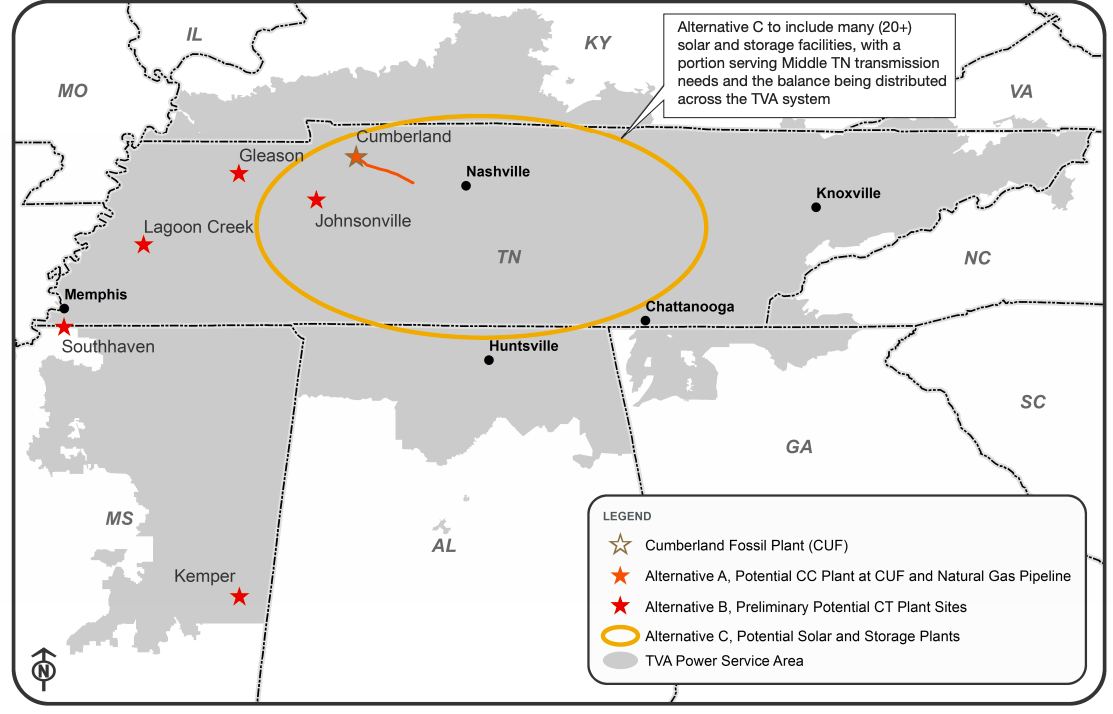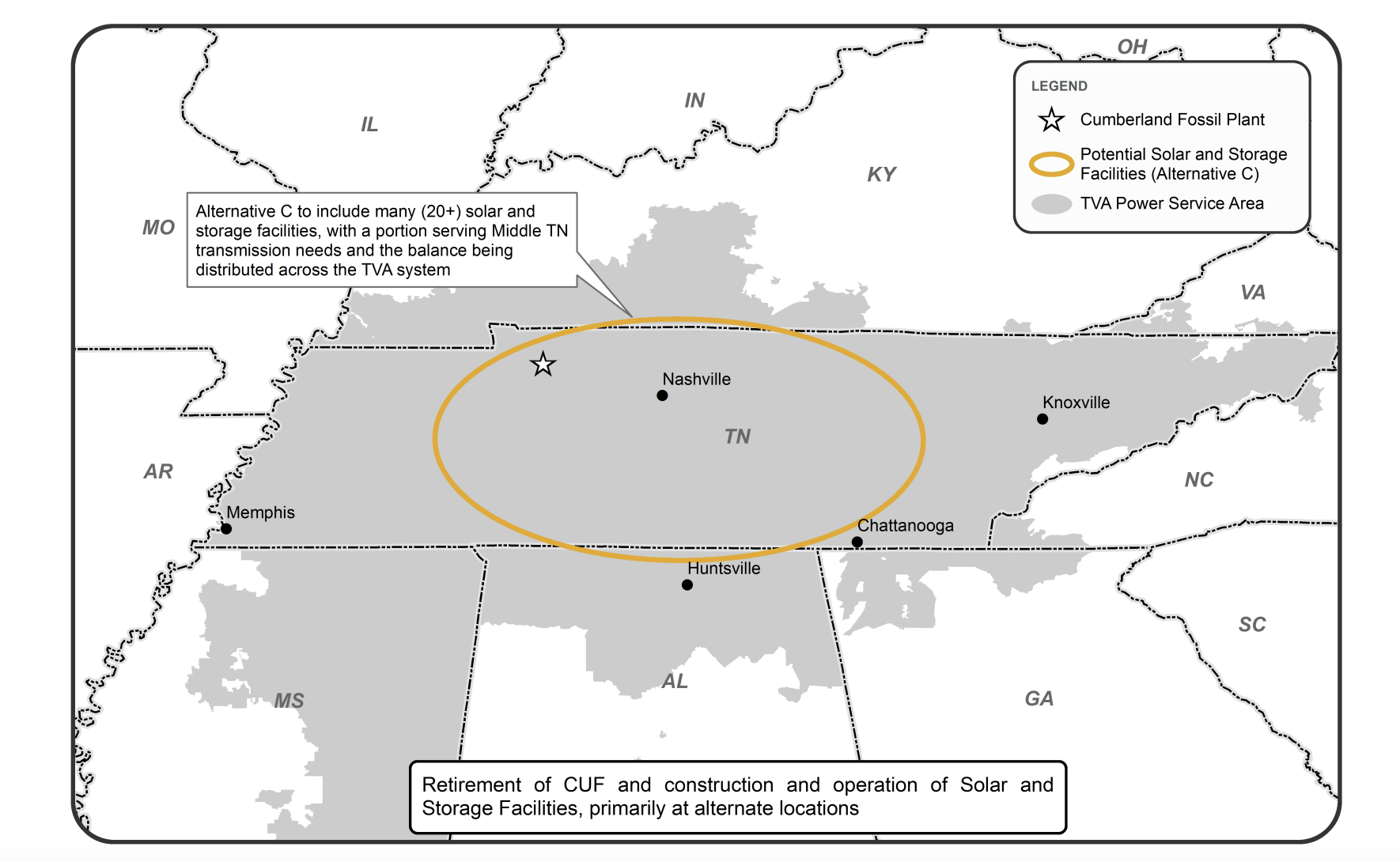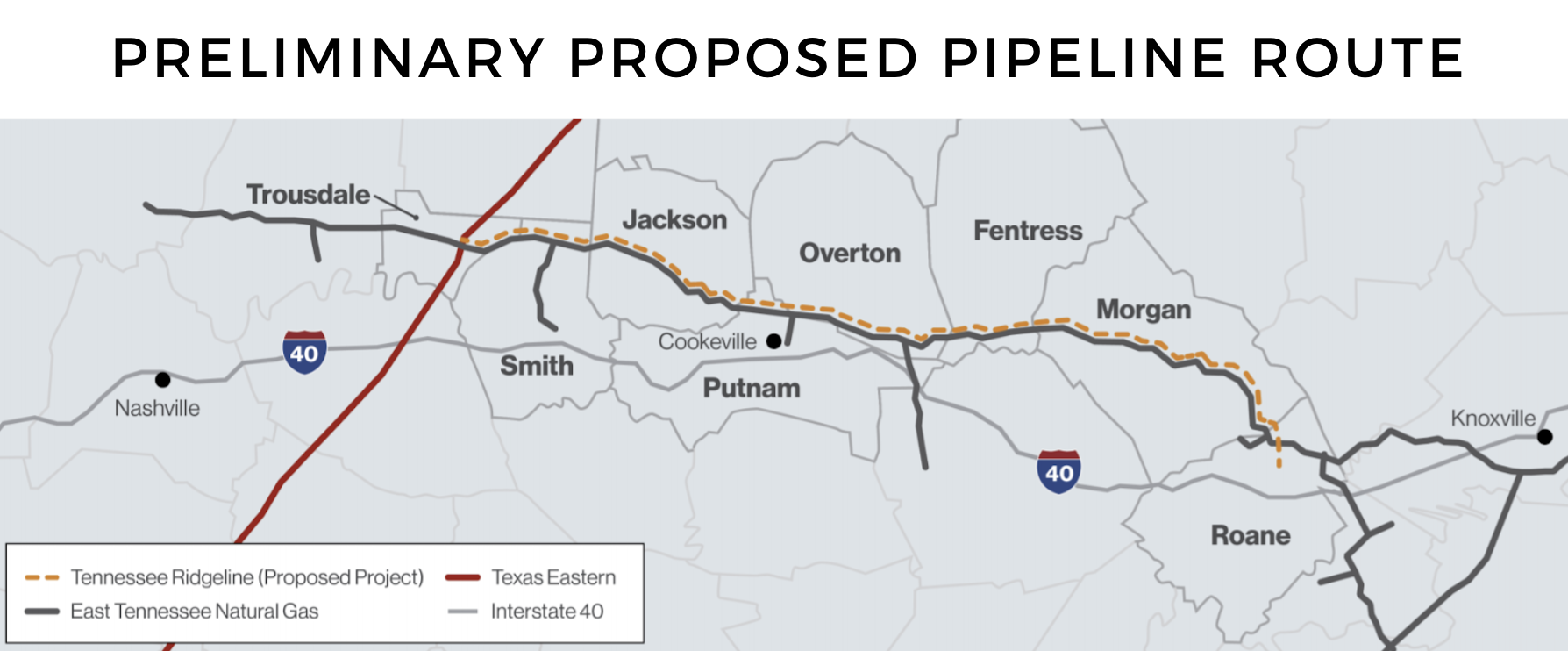TVA has begun two plus years-long NEPA processes to retire and replace the Cumberland and Kingston coal plants. Here's an update on happenings and opportunities to get involved as of July 2021.
Maggie Shober | July 14, 2021 | Coal, Fossil Gas, TennesseeCiting cost concerns and reliability risks, the Tennessee Valley Authority (TVA) announced in April 2021 it is planning to retire the remainder of its coal-fired power fleet, one of the oldest in the country, by 2035. This development came just one week after President Biden pledged to cut greenhouse gas emissions in the U.S. in half by 2030, and after he called for the power sector to be fully carbon-free by 2035 in early April.
While these coal plant retirements are an important step toward decarbonization, it is imperative to note zero-coal is not the same as zero-carbon. Below is an overview of the process TVA is going through to determine when to retire two of the plants, and what will replace them with, but let’s first take a look at the overall impact of these coal plants and TVA’s energy portfolio today.
TVA’s energy mix
At its height in the early 2000s, TVA’s coal fleet included 12 coal-fired plants (not including contracts). Since 2011, the nation’s largest public utility has retired more than half of its coal fleet. In 2019, TVA’s five coal-fired plants it planned to operate through 2030 emitted over 26-million tons of carbon dioxide.

As of 2019, TVA’s generation portfolio had a total capacity of nearly 34,000 megawatts. In the year 2019 TVA’s energy needs were met with 14% coal, 27% fossil gas, 41% nuclear, 13% hydroelectric, 3% wind and solar, and <2% energy efficiency.
With the planned closures of coal plants to happen by 2035 comes the need to replace power generation with new energy resources, TVA has already announced plans to add 1,500 MW of more fossil gas plants to replace existing fossil gas plants. So far, TVA has crafted the process to replace remaining coal so that it favors heavy investments in new fossil gas infrastructure, including multiple new pipelines in Tennessee.
TVA Fossil Plants
Cumberland coal plant
Cumberland is a 1970s era coal plant with a total of approximately 2,500 MW of capacity located in middle Tennessee near Clarksville. Cumberland is the largest of TVA’s coal plants, and responsible for the most pollution, with this one plant emitting nearly 11 million tons of carbon dioxide in 2018.

Read more information about TVA’s plans and possible future options below”
- TVA info page on the Cumberland Fossil Plant retirement.
- TVA held a public comment period on the scope of the Environmental Impact Statement (EIS), which ended last month. Read a selection of the comments submitted by SACE members.
- The Department of Energy’s Environmental Impact Statement (EIS) will include the study of three alternatives to replace Cumberland coal units with 1,450 MW of new generation. View a breakdown of each location and see all three on the maps below.
- Option A: Retirement of the Cumberland coal plant and construction and operation of a Combined Cycle Combustion Turbine (CC) Gas Plant on the site of the current Cumberland plant.
- Option B: Retirement of Cumberland and construction and operation of Simple Cycle Combustion Turbine (CT) Gas Plants at alternate locations
- Option C: Retirement of Cumberland plant and construction and operation of Solar and Storage Facilities primarily at alternate locations
- The EIS will evaluate retiring one of the coal-fired units at Cumberland in 2026-2030, and the other unit in 2028-2033.




Kingston Coal Plant
Kingston is one of the oldest coal plants in the country, and infamous for its 2008 coal ash spill and cleanup disaster. It is an approximately 1,300 MW coal plant in East Tennessee, notably visible on Interstate 40 as you drive across the state. It also has the worst heat rate (i.e. efficiency) of all of TVA’s coal plants.

- View the TVA information page on the Kingston Coal Plant retirement.
- Comments on the scope of the Environmental Impact Statement, including what alternatives to replace coal units with, are open through July 15. Take one minute and urge TVA to replace the coal plants with clean, renewable energy using our action tool.
- EIS to include a study of three alternatives, which are virtually the same as Cumberland, 1,450 MW, retire 3 units 2026-2031, remaining 6 units 2027-2033
- Option A: Retirement of Kingston coal plant and construction and operation of a Combined Cycle Combustion Turbine (CC) Gas Plant at the same site
- Option B: Retirement of Kingston coal plant, investment in local and regional transmission, and construction and operation of Simple Cycle Combustion Turbine (CT) Gas Plants at alternate locations
- Option C: Retirement of Kingston Coal Plant and construction and operation of Solar and Storage Facilities, primarily at alternate locations. All retirement options will also include the demolition of the Kingston coal plant

Gallatin and Shawnee Coal Plants
Located in Gallatin, Tennessee, just off the Cumberland River, the Gallatin Coal Plant opened in 1956 has a total capacity of 2,531 MW that emitted 4.6 million tons of carbon dioxide in 2019.
You’ll find the Shawnee Fossil Plant in West Paducah, Kentucky. It was opened in 1953 and emitted 6.6 million tons of carbon dioxide in 2019. A FOIA request by SACE revealed TVA plans to retire “uncontrolled” Shawnee units of 798 megawatts in 2034 (~half of total plant capacity).

The process and timing for these two plant full retirements are unknown at this point. Stay tuned here for further developments.
Bull Run Fossil Plant
Located in Anderson County, Tennessee, this coal plant is also still operational but has had a 2023 retirement date previously announced.
Let’s Renew Tennessee
As a federal agency and the nation’s largest public power provider, it’s incumbent on TVA to accelerate the decarbonization of their power grid, not continue to invest in more fossil fuels that jeopardize the health of our communities and saddle customers with the cost. In addition, the span of 15 years to retire TVA’s coal-fired plants is out of sync with the Biden administration’s goals, and even if the agency fully retires coal, other sources of energy – such as fossil gas – are not carbon-free.
Join our Renew Tennessee campaign to get updates on actions you can take and ways to get involved in advocating for a cleaner, brighter, and more equitable future in the Valley that doesn’t continue to harm and rely on outdated and expensive fossil fuel.